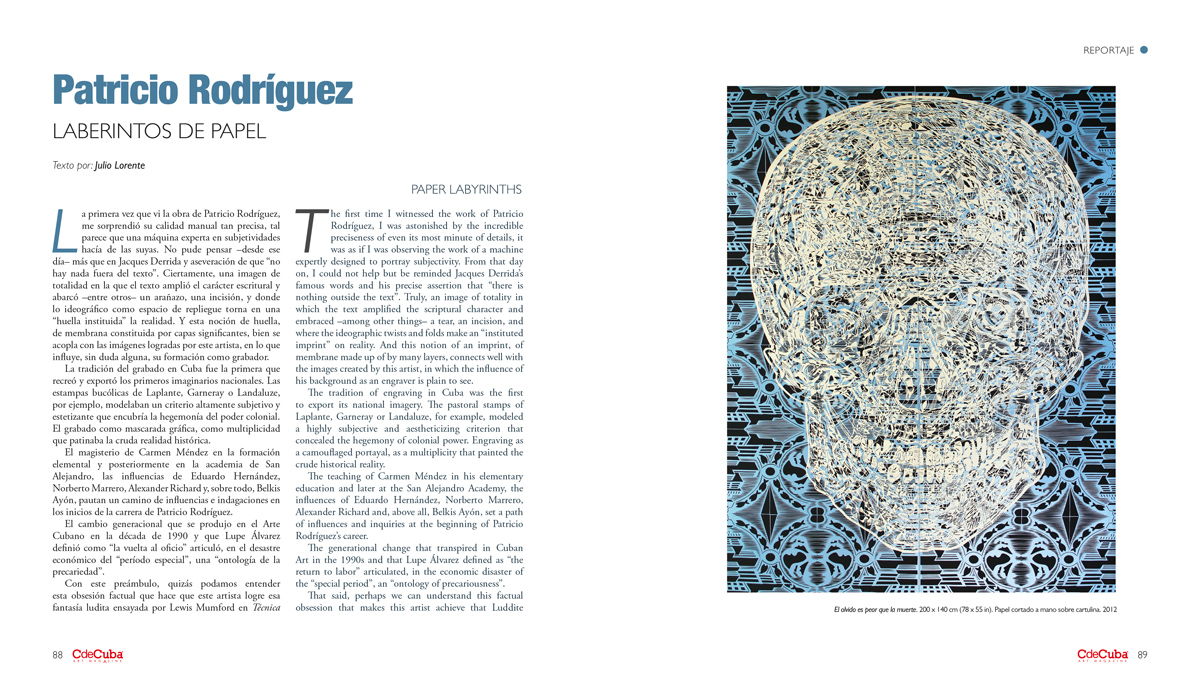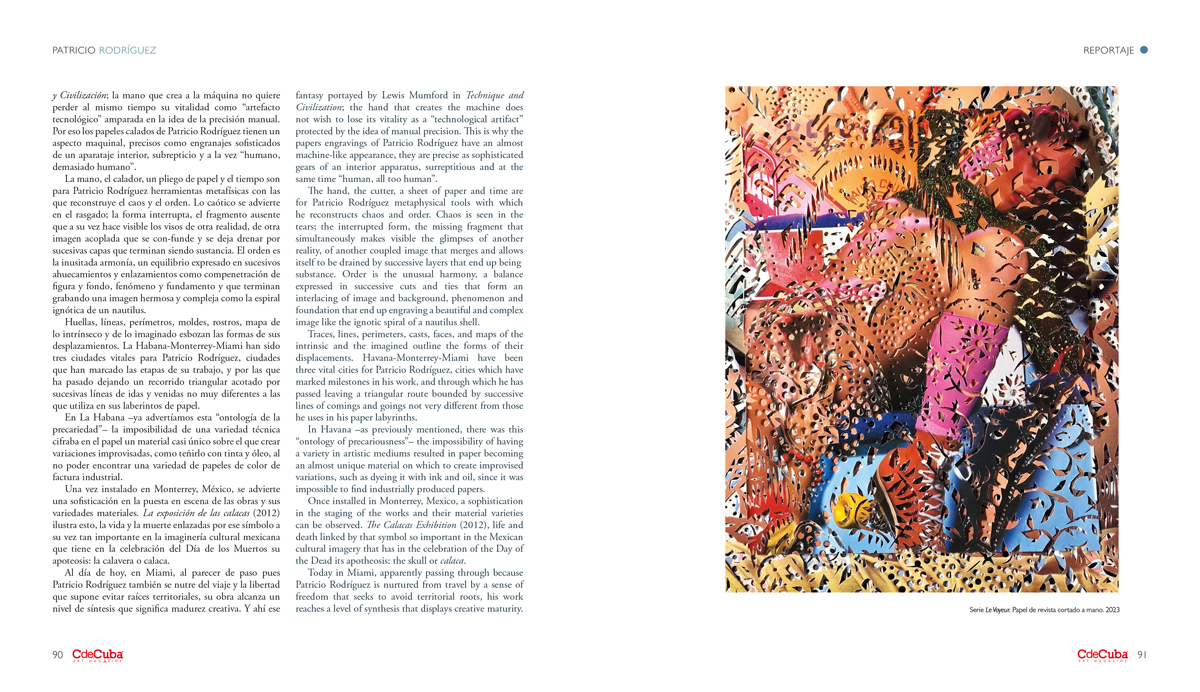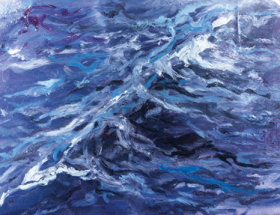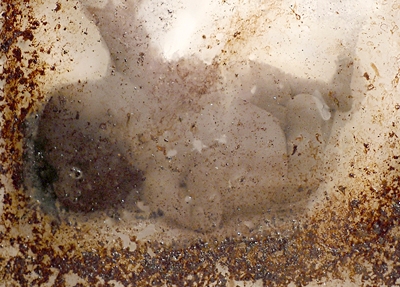Paper Labyrinths
By Julio Lorente
The first time I witnessed the work of Patricio Rodríguez, I was astonished by the incredible preciseness of even its most minute of details, it was as if I was observing the work of a machine expertly designed to portray subjectivity. From that day on, I could not help but be reminded Jacques Derrida’s famous words and his precise assertion that “there is nothing outside the text”. Truly, an image of totality in which the text amplified the scriptural character and embraced –among other things– a tear, an incision, and where the ideographic twists and folds make an “instituted imprint” on reality. And this notion of an imprint, of membrane made up of by many layers, connects well with the images created by this artist, in which the influence of his background as an engraver is plain to see.
The tradition of engraving in Cuba was the first to export its national imagery. The pastoral stamps of Laplante, Garneray or Landaluze, for example, modeled a highly subjective and aestheticizing criterion that concealed the hegemony of colonial power. Engraving as a camouflaged portayal, as a multiplicity that painted the crude historical reality.
The teaching of Carmen Méndez in his elementary education and later at the San Alejandro Academy, the influences of Eduardo Hernández, Norberto Marrero, Alexander Richard and, above all, Belkis Ayón, set a path of influences and inquiries at the beginning of Patricio Rodríguez’s career.
The generational change that transpired in Cuban Art in the 1990s and that Lupe Álvarez defined as “the return to labor” articulated, in the economic disaster of the “special period”, an “ontology of precariousness”.
That said, perhaps we can understand this factual obsession that makes this artist achieve that Luddite fantasy portayed by Lewis Mumford in Technique and Civilization; the hand that creates the machine does not wish to lose its vitality as a “technological artifact” protected by the idea of manual precision. This is why the papers engravings of Patricio Rodríguez have an almost machine-like appearance, they are precise as sophisticated gears of an interior apparatus, surreptitious and at the same time “human, all too human”.
The hand, the cutter, a sheet of paper and time are for Patricio Rodríguez metaphysical tools with which he reconstructs chaos and order. Chaos is seen in the tears; the interrupted form, the missing fragment that simultaneously makes visible the glimpses of another reality, of another coupled image that merges and allows itself to be drained by successive layers that end up being substance. Order is the unusual harmony, a balance expressed in successive cuts and ties that form an interlacing of image and background, phenomenon and foundation that end up engraving a beautiful and complex image like the ignotic spiral of a nautilus shell.
Traces, lines, perimeters, casts, faces, and maps of the intrinsic and the imagined outline the forms of their displacements. Havana-Monterrey-Miami have been three vital cities for Patricio Rodríguez, cities which have marked milestones in his work, and through which he has passed leaving a triangular route bounded by successive lines of comings and goings not very different from those he uses in his paper labyrinths.
In Havana –as previously mentioned, there was this “ontology of precariousness”– the impossibility of having a variety in artistic mediums resulted in paper becoming an almost unique material on which to create improvised variations, such as dyeing it with ink and oil, since it was impossible to find industrially produced papers.
Once installed in Monterrey, Mexico, a sophistication in the staging of the works and their material varieties can be observed. The Calacas Exhibition (2012), life and death linked by that symbol so important in the Mexican cultural imagery that has in the celebration of the Day of the Dead its apotheosis: the skull or calaca.
Today in Miami, apparently passing through because Patricio Rodríguez is nurtured from travel by a sense of freedom that seeks to avoid territorial roots, his work reaches a level of synthesis that displays creative maturity.
And that effect of completeness and sagacity of series such as the series Circles (2020). Or more recent series such as Le Voyeur (2022), where the literal character and the ‘’destructive unveiling’’ that observes the philosopher Byung-Chul Han in pornography is annulled with a poetic subtlety, the artist carves pornographic photography where the separation from the ordinary and the sexually explicit is reconstructed by a pierced membrane that returns to us, as spectators, the power of evocation. Beauty as a vail.
This artist flees from totality, he prefers the tangled fragment, the surreptitious journey of the reverse, the trumpet-tree at sunset. Rainer Maria Rilke commented that the act of seeing was like a wound, a penetration into the unknown of the self from a hollowness. This is the creative universe of Patricio Rodriguez, an openingtowards the complex. A glimpse into the successive lines carved by subjectivity.






